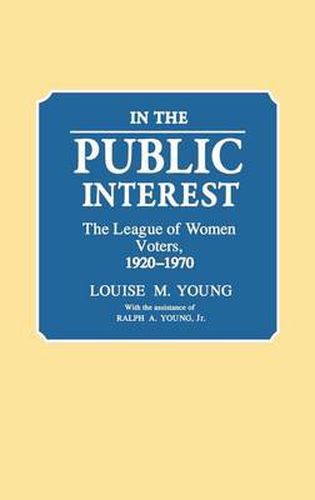Readings Newsletter
Become a Readings Member to make your shopping experience even easier.
Sign in or sign up for free!
You’re not far away from qualifying for FREE standard shipping within Australia
You’ve qualified for FREE standard shipping within Australia
The cart is loading…






When the 19th Amendment became law on August 26, 1920, women as newly enfranchised voters entered an era of political rights and responsibilities for which, as a subordinate class, they were unprepared. This book details the vital role played by The League of Women Voters as a force in shaping the political participation of American women from 1920 to 1970. From its beginnings, the league, a major surviving offspring of the women’s suffrage movement, exemplified the nonpartisanship, political skills, lobbying methods, and grass-roots organizational capabilities previously employed in winning the vote for women. During its early years, the league devised the strategies for capturing the energies and ideals of the suffrage movement and directing them to broadly defined goals of social reform and good government. To achieve these ends, the league learned to work through political institutions at all levels: local and state governments, the three branches of Federal government, and both political parties. Young shows how the league implemented these strategies and, in the process, developed methods of political education and provided political experience that strengthened American democracy by contributing to the growth of thousands of citizens.
$9.00 standard shipping within Australia
FREE standard shipping within Australia for orders over $100.00
Express & International shipping calculated at checkout
When the 19th Amendment became law on August 26, 1920, women as newly enfranchised voters entered an era of political rights and responsibilities for which, as a subordinate class, they were unprepared. This book details the vital role played by The League of Women Voters as a force in shaping the political participation of American women from 1920 to 1970. From its beginnings, the league, a major surviving offspring of the women’s suffrage movement, exemplified the nonpartisanship, political skills, lobbying methods, and grass-roots organizational capabilities previously employed in winning the vote for women. During its early years, the league devised the strategies for capturing the energies and ideals of the suffrage movement and directing them to broadly defined goals of social reform and good government. To achieve these ends, the league learned to work through political institutions at all levels: local and state governments, the three branches of Federal government, and both political parties. Young shows how the league implemented these strategies and, in the process, developed methods of political education and provided political experience that strengthened American democracy by contributing to the growth of thousands of citizens.